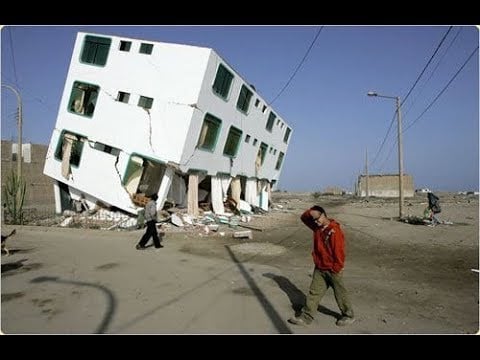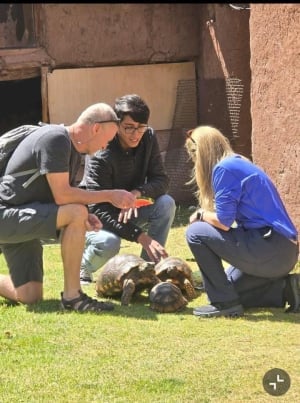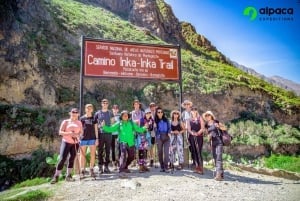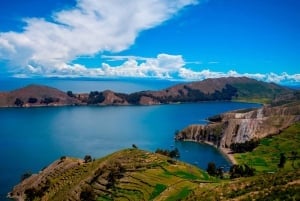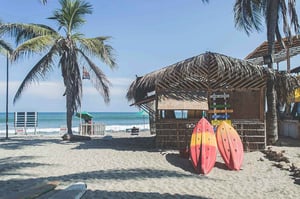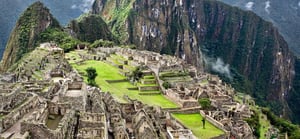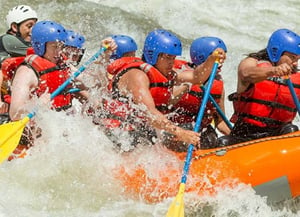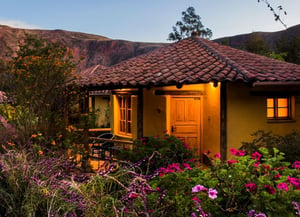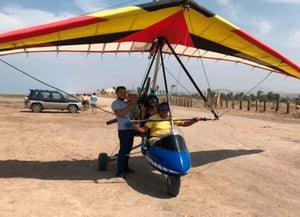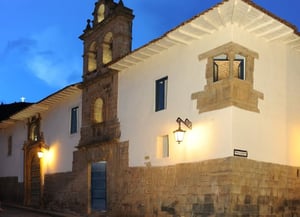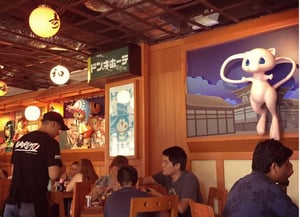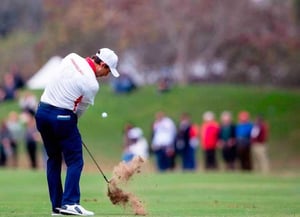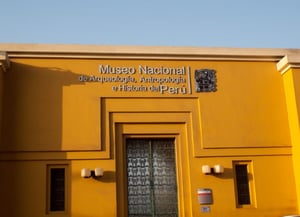Earthquakes in Peru - Why? & What to do?
Earthquakes are among the most powerful and terrifying events on earth. Unfortunately for thousands of years they have been a common occurrence in Peru and the area of Lima. We never know when and where to expect the next earthquake, so be prepared and aware on what to do.
Why Earthquakes occur in Peru?
Scientists have developed a theory, called plate tectonics, that explains why most earthquakes occur. According to this theory, Earth's outer shell consists of about 10 large, rigid plates and about 20 smaller ones. Each plate has a section of Earth's crust and a portion of thick layer of hot rock below the crust. The plates move slowly and continuously. They collide, move apart or slide past one another. These movements finally can cause earthquakes.
Peru is situated along the boundary of two tectonic plates: the Nazca Plate and the South American Plate. The interface between these two plates is located near the Peruvian coast. At a rate of about 50 mm per year the South American Plate is moving towards the Pacific Ocean over the Nazca Plate. That may not sound a lot but it is enough to put huge strain on the Earth's crust. The pressures are periodically released through earthquakes.
General Recommendations
- Stay calm, don't panic! You need a clear mind to react proper.
- Don't scream or shout hysterically, everybody else will do that for you!
- Don't run! Walk!
- Don't use elevators!
- Avoid using the stairs! They move different as the rest of the building and cause you to fall.
- If you are in a crowded place far from an exit, look for a safe place away from the crowd! Being in the middle of a bunch of panicking people trying to get out of one door might harm you more than staying at a safe corner.
If you are Indoors (Drop, Cover and Hold on - Method)
- These are the recommendations of the American Red Cross and the Peruvian Institute of Seismology on how to behave during an earthquake if you are inside a building.
- Drop to the ground; take cover by getting under a sturdy table or other piece of furniture and hold on until the shaking stops.
- Move only a few steps to a nearby safe place.
- Stay indoors until the shaking stops and you are sure it's safe to exit.
- Stay away from windows, outside doors and walls, and anything that could fall on you.
- In high-rise buildings, expect the fire alarms and sprinklers to go off during a quake.
- If you are in bed, stay there. Hold on and protect your head with a pillow.
- Don't use the elevators.
If you are Indoors (The Triangle of Life - Method)
Contrary to the above mentioned standard practices, Doug Copp, director and rescue chief of American Rescue Team International, recommends a controversial, but in our opinion fairly logic method of keeping safe during an earthquake while being inside a building. Doug Copp has worked in earthquake rescue operations around the world. He saw over and over again that survivors of heavy earthquakes were always found in some sort of hollow space next to large or bulky objects like cars, furniture, fridges, etc. Therefore his mission is to protect us from the standard recommendation "duck and cover". He says: "It is not the earthquake which kills you. Getting under a squashed desk or table kills you. You can survive by fleeing the building if you can get out the ground floor or getting into a survivable void, next to a large, bulky object ". These even internationally more and more accepted recommendations are worth a closer look and may save your life!
Even the American Red Cross backed off a little from their standard recommendation: We contend that "Drop, Cover, and Hold On" indeed saved lives, not killed people. Because the research continues to demonstrate that, in the U.S., "Drop, Cover, and Hold On!" works, the American Red Cross remains behind that recommendation. It is the simplest, reliable, and easiest method to teach people, including children. What we are saying is that "Drop, Cover, and Hold On!" is not wrong - in the United States. The American Red Cross, being a U.S. based organization, does not extend its recommendations to apply in other countries. What works here may not work elsewhere, so there is no dispute that the "void identification method" or the "Triangle of Life" may indeed be the best thing to teach in other countries where the risk of building collapse, even in moderate earthquakes, It is great.


